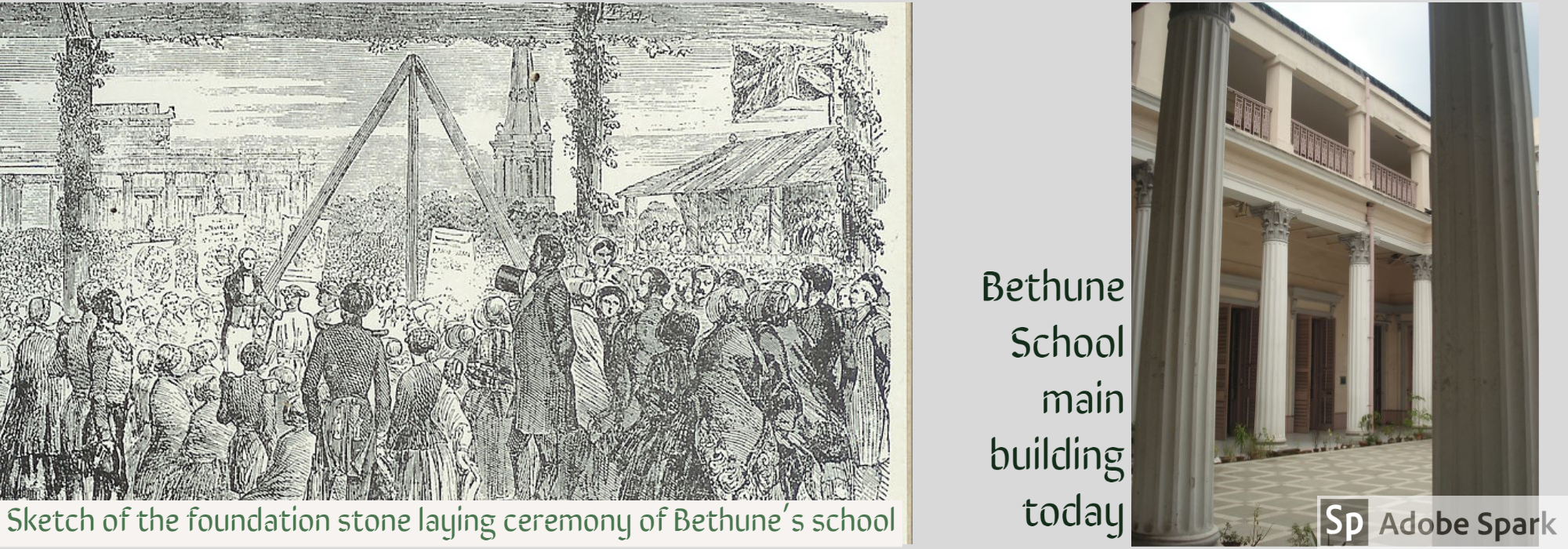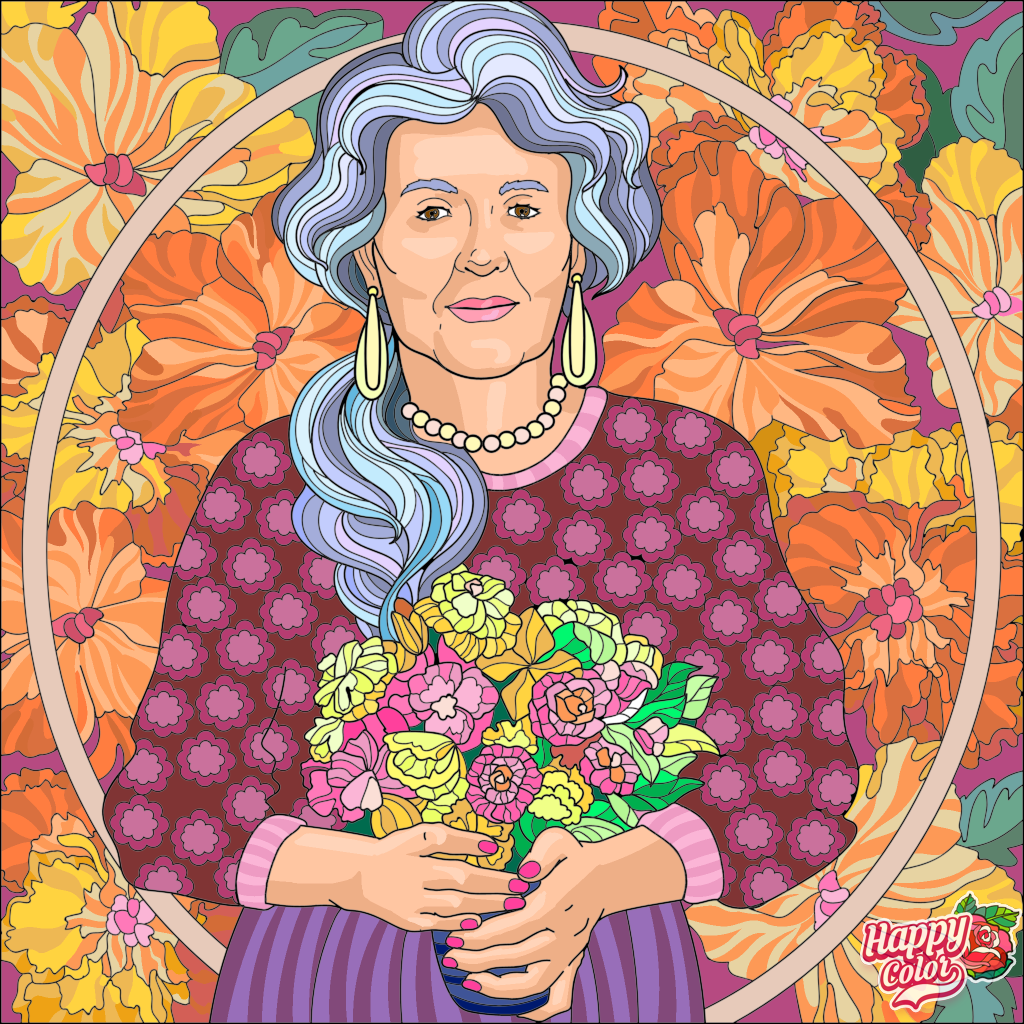Bethune Day July 12
#bethuneschool



শিক্ষা আমার দীক্ষা আমার, জীবনে আমার সুখের মূল,
পেয়েছি যেখানে জগৎ মাঝারে, কোথাও তাহার নাহিকো তুল |
লভিল যেখানে বঙ্গবালিকা নিরাশ আঁধারে আশার ডোর
আজিও সেখানে শতেক পরাণে উঠেছে জাগিয়া মহিমা ঘোর
সোনার বঙ্গে আশার রঙ্গে মুছিয়া গিয়াছে নয়নলোর |
হরষ ভরে গাহিছে সবে বেথুন স্কুল সে যে গো মোর |
হরষ ভরে গাহিছে সবে বেথুন কলেজ সে যে গো মোর ||
John Elliot Drinkwater Bethune alighted at Calcutta on 8th April 1848.
It was a disappointing rejection by his alma mater, the Trinity College in Cambridge, that ultimately became a boon for Bengali girls. Bethune was the fourth Wrangler in 1823 but was not offered a teaching position there. He took a degree in law and was called to the bar in 1827.
Bethune’s very first exposure to India was through the staunchly conservative Hindus when he assisted them as a junior in appealing against Lord Bentinck's 1829 Suttee Prevention Act. Though the appeal was dismissed in Privy Council, it was to have an everlasting effect on young John. He was filled with remorse that he had, in his ignorance, sided with a reactionary group to help perpetuate a most inhuman of all customs. It was his mother Eleanor, whose ‘counsels (were) his guide and … approval his highest earthly reward', who advised him to render an everlasting service for betterment of the condition of women in India, to atone for his earlier action. This sense of justice guided Bethune all through his life.
Bethune’s appointment in India was as a Legislative Member of the Supreme Council of India and President of the Council of Education. Perhaps the latter one was more alluring to him. While accepting it, did he remember his promise to his departed mother to render an everlasting service to Indian women?
In 1848 western education was already getting popular in Bengal. Bethune had under his direct control 19 schools and 6 colleges, but none were meant for girls. Nevertheless, there was a demand for educated brides among the western educated young men, who wanted a wife to give them company, not only in bed, but in day-to-day life too. A movement for institutionalized education for girls started with a few girls' schools under the initiative of a few determined young men. One such school was in Barasat, set up in 1847 by the two brothers Kalikrishna and Nabin Krishna Mitra, with the help of Peary Charan Sarkar, of the First Book of English fame. Bethune visited that school almost immediately he landed in Calcutta.
The Barasat school impressed and inspired Bethune. He was reminded of the plight of girls from high caste well-to-do Hindu families, whose lot was the worst, as far as education was concerned. They were married off at an early age and if widowed, would live in utter misery. Even though there were girls’ schools run by Missionaries, these girls were not allowed to attend those for obvious reasons. To establish a school for these girls, he established contacts with like-minded Hindu gentlemen such as Baboo Ramgopal Ghosh, Dakshinaranjan Mukherjee, Pundit Madanmohun Tarkalankar etc. Dakshinaranjan Mukherjee offered his house in Sukea Street for establishment of the Hindu Female School. The school started functioning on May 7 1849 with 11 small girls.
In his speech on that momentous day, Bethune assured that “the plan which has been uniformly followed in the Government schools, of not meddling with the religion of your children, is to be strictly followed” in the school. Only girls of respectable Hindu families could study there. On March 29, 1850 Bethune wrote a letter to Lord Dalhousie expressing his hope that if His Lordship could influence the “Honourable Court of Directors in inducing them to address Her Majesty for leave to call the School by Her name”. Though Lord Dalhousie was a personal friend of Bethune, it is not known why his request was not granted.
Bethune continued to defray the expenses of his school from his own pocket, though he had influential friends, including Iswar Chandra Vidyasagar to support in his endeavour. From the beginning the school building drew criticisms for being ‘too open’ for the respectability of the girls from reputed families. After several changes of venues, the land on which Bethune’s School stands today was procured from the government through an exchange of a piece of land owned by Dakshinaranjan Mukherjee and another piece of adjacent land bought by Bethune himself. On Novenber 6, 1850 foundation stone was laid formally for the school’s own building. On that occasion an Ashoka sapling was planted. Says Bethune in his speech, ”The choice of this particular tree for the purpose had not been made and advised without a meaning. I am told that it’s Bengali name may not be unfitly paraphrased as “The Tree of Gladness”. … it is held in especial honour among Hindu women. … By eating its blossoms they should bring blessings on their children. It seemed to me therefore not an inappropriate representation of an institution, of the fruits, of which if they will indeed consent to partake, they will bring upon them the choicest blessings of which our nature is capable”.
Bethune did not live to see the completion of the school building. His sudden demise by pneumonia on 12 August 1851 shocked the city. In his last will and testament Bethune left all his money for the upkeep of the school. His personal carriage he donated to the school and trusted his Indian and European friends to look after the school amidst the turbulent time. The school, from the beginning, drew friends and foes in equal measures.
For a long long time Bethune Day was celebrated in Bethune School on August 12. When I was a student there, in the 1970s, small girls would place garlands before the pedestal of the marble statue of Bethune placed in the school’s hall. They would wear white frilled frocks with black ribbons at the waist. This ceremony is now observed on July 12, on the day Bethune was born in 1801. The song that is played when the little girls walk in the procession is
কি দিয়া পূজিব তোমার চরণ, হে নরদেবতা, হে মহাপ্রাণ |
লও হে অর্ঘ্য কুসুমাঞ্জলি, ভক্তি অশ্রু স্নিগ্ধ দান ||
শত নদনদী গিরিকান্তার,
ঊর্মিমুখর সাগরের পার,
জনম লভিয়া ভালোবেসেছিলে আমাদের জননীরে |
বিদ্যায় মানে অতি নগণ্য,
অবোধ বঙ্গবালার জন্য
তোমার করুণাসিন্ধুতে যবে জেগে উঠেছিল বান ||
Comments
Saatbkahan
Well informed, nicely expressed
Shyama Palit
10-07-2020 22:44:07
Philosophy
Excellent illustration ! Really feeling enriched ! Awaiting many such presentations !
Pritha Ghosh Sen
11-07-2020 01:49:00
Bethune day
কত অজানারে জানাইলে। খুব মনে পড়ে বেথুনডে, কলেজে পড়ার সময়ে আমরা ওনার সমাধিতে পুষ্পার্ঘ্য অর্পণ করতে গিয়েছিলাম ঊষাদির সাথে।
Nandita Chatterjee
11-07-2020 04:25:26
Chemistry
Feeling great for this auspicious day
Bulbuldawn
12-07-2020 05:28:56
Appreciation to Srabashi , our friend
Saat Kaahon , on Bethune Day , 12th July, 2020 By Srabashi Basu , is amazing , from start to the end. Which attracted me most were Born on 12th July , 1801 and suddenly died on 12th August 1851 , due to pneumonia . Short lived only for 50 years. Disappointing rejection by his Alma mater , the Trinity College in Cambridge , that....became a boon for the Bengali girls. It was his Mother, ELEANOR , whose counsels were .... his highest earthly Reward . An everlasting Service for the betterment of the condition of Women in India. The Barasat School impressed & inspired Bethune. The Tree of gladness , its special honor among Hindu women. The School from the Day one , drew friends & foes in equal measures. And so on ... Very interesting piece of presentation, to honor the founder of Our Beloved Bethune Collegiate School.
Aruna Pal
14-07-2020 06:34:20
Reply here




Bethune
Knew so little about this great man
Soma
10-07-2020 07:16:49